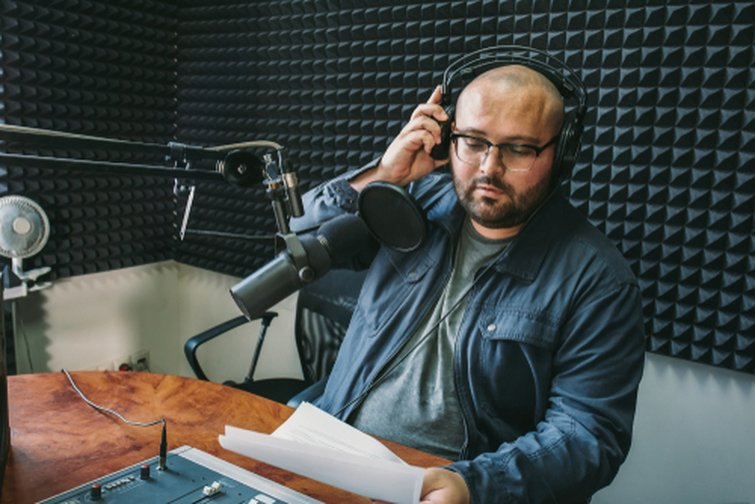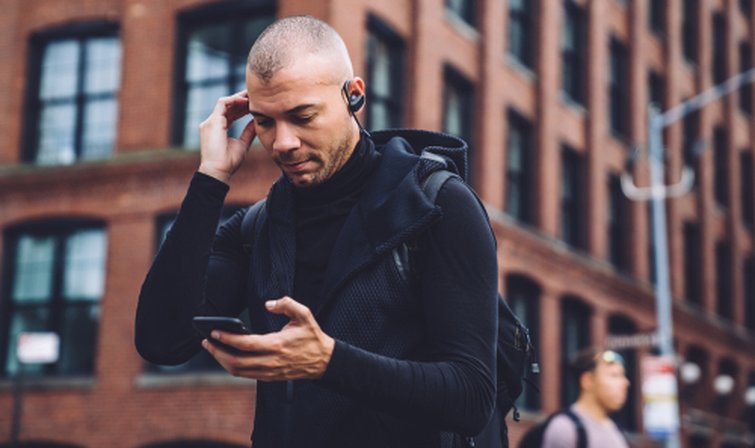
How Your Choice of Podcast Music Can Make or Break Your Success
Your new podcast is almost ready to go. You’ve honed your POV, assembled the team, and recorded the first episode. Now it’s time to lock down the most crucial component — the music.
Want to make sure that nobody ever hears your new podcast? Give it a soundtrack of your favorite songs. In the best case scenario, your content gets flagged and pulled. The worst case scenario involves expensive fines and legal trouble.
If you want your podcast project to be sustainable and successful, you’ve got to keep things legit. Unfortunately, licensing popular music is a red-tape nightmare, and it isn’t financially feasible for most independent podcast creators.
Someday, royalty and attribution schemes will catch up with the digital age. Until that time comes, you can certainly count on high-quality stock music to capture your audience.

Of course, once you decide to go the stock music route, you’ll be faced with a new (and actually fun) challenge — choosing tracks that perfectly complement your podcast vision.
But with a trillion (give or take) royalty-free songs available on the internet, where do you even begin? Here are some things to consider when choosing music for your podcast endeavor.
Remember the Goal of Your Podcast

What sort of podcast are you creating? Perhaps your sonic creation will be narrative, with lots of editing and a variety of sound elements. Maybe your project will take on an interview format, with little-to-no editing. Whatever the goal may be, remember why you decided to embark on your podcasting journey.
Another important thing to remember is that the music you incorporate into your podcast should bolster your aim while not getting in the way of the actual content.
For instance, if your podcast is narrative, you may want to incorporate bed music to accompany your story. This cinematic approach can galvanize the emotional tone you’re aiming for, setting the mood and creating a sort of sonic landscape for your narrative. This could be a longer piece of music, with progressive or subtle changes, rises, and falls. Music with sustained, fluid, or evolving sounds may be seamlessly edited, and can lend depth to a story-driven podcast without distracting from the narration.
Conversely, an interview-oriented podcast will need to leverage music quite differently. In these instances, you’ll want to use musical elements as signals to your listener. A great intro music track can set the mood, and brief musical interludes can signify transitions between segments. For this approach, keep it short and sweet, and opt for music that pairs nicely with the energy of whomever is speaking.
Understand the Podcast Environment — Then Look Beyond It

Every year, podcasting gains more and more ground within the pop-culture sphere. According to The Infinite Dial 2020, an annual survey performed by Edison Research and Triton Digital, the number of Americans who say they’ve listened to a podcast has increased steadily every year since 2013, up to 55% in 2020.
As a maturing medium, podcasting comes with its own set of conventions — styles, structures, familiar sounds, etc. — that savvy listeners can pick up on quickly.
One way these familiar sounds manifest in the podcast world is in the form of a sort of musical shorthand that borrows from established shows and genres. Examples of this musical shorthand are easy to find in the multitude of true-crime copycats that cropped up after the mainstream success of Serial.
Sinister-sounding music with thin, minor-key instrumentation has become the go-to sound of true crime. If this is the vibe you’re going for, I encourage you to study this trend, understand what makes it work — and then throw it out the window.
While it’s important to understand the parts that make another podcast really work, an imitation will always land short of the original. So, instead of searching for a track that sounds just like Serial, you could observe individual qualities of the show’s theme and understand why it works so well.
Perhaps the thin instrumentation (just a piano and some percussive elements) embodies a sort of “smallness” that creates the feeling of leaning in to listen. Maybe the minor key melody stirs tension. Unpacking what makes that theme work will provide much better guidance than simply imitating the greats.
Think Spatially

Done well, a podcast can embody a sort of audio journey. That said, since podcasts are inherently, well, audio, they rely on sound to paint a mental image — whether it be a time or a place. To create a place in your listener’s mind, it helps to think spatially. Think of each segment of your podcast as a separate room and of each transition as entering the next room.
To accomplish this, music is the key. Bed music can guide the listener, evolving with the story and establishing new settings with every change. If you’re relying on transitions to separate segments of your podcast, think of these musical interludes as primers for your listener, setting the stage before stepping in.
The Daily from The New York Times is a master class in this type of soundscape-building. Each episode begins with the podcast’s familiar theme, setting a tone of seriousness and intensity combined with adroit mindfulness. Then, as the story unfolds, musical interludes establish settings and frame details with seamless ease. If your podcast is a journalistic blend of interviews, soundbites, and commentary, this approach is the gold standard.
Time Is Precious

Another important challenge to consider is your audience’s precious time. The Infinite Dial 2020 reported that the typical American podcast fan averages just over six minutes of listening every week. That average has remained relatively flat since 2018. While the number of new listeners marches upward every year, the time people dedicate to listening may be finite. Therefore, it’s best to not gobble up your listener’s time with unnecessarily lengthy intro music.
Keep intros and transitions brief, and keep longer elements engaging. Lengthy elements can work quite well, but it’s important to understand that you need to capture an audience early and keep them. In his podcast about podcasts — 3 Clips — Jay Acunzo dissects other podcasts by zeroing in on just a few seconds of an episode. The very premise of Acunzo’s podcast on podcasts illustrates the importance of capturing your audience quickly.
Don’t let your music get in the way. Find music that grabs your listener’s attention. These first few seconds are crucial, so nailing your intro with succinct, attention-grabbing music is paramount. When in doubt, ask yourself, “If I didn’t make this, would I keep listening?”
Choose Music that Connects with Your Audience
While data and other successful podcasts can provide great guidance, always defer to what you know will connect with your audience. One striking insight provided by The Infinite Dial in its Podcast Consumer 2019 report focused on podcast awareness.
The report notes that 19% of Americans were “aware” of podcasts but had never listened to one. When asked why they hadn’t taken the plunge, most said they thought “podcasts just weren’t for them.” Tom Webster of Edison Research frames this data, insisting that these potential listeners just haven’t found the podcast that speaks to them. This means there’s an audience for anything you may be passionate about.
If your choice of podcast music reflects this, you might be the one to finally capture these wayward ears. Don’t just wade into the saturated pool of audio content with cheap imitations. Use unique music and novel sounds to make your podcast stand out. While the big podcasting successes can provide a road map, there are still infinite paths. Choose the route — and music — that will connect listeners with what you have to say.
Want more tips about podcast music? Read these useful resources:
- Improve Your Podcast with Royalty-Free Music Tracks
- Tell a Better Story with Effective Podcast Sound Mixing
- Every Podcast Editing and Recording Software, Ranked
Cover image via DisobeyArt.




